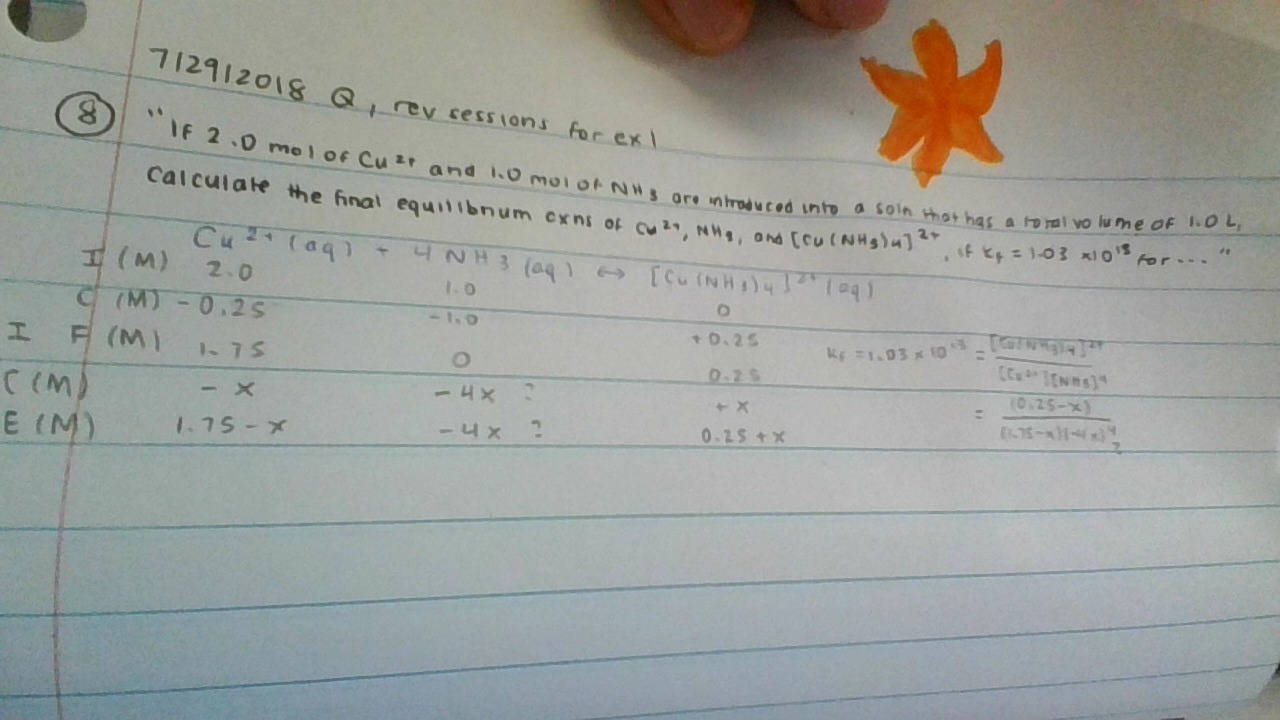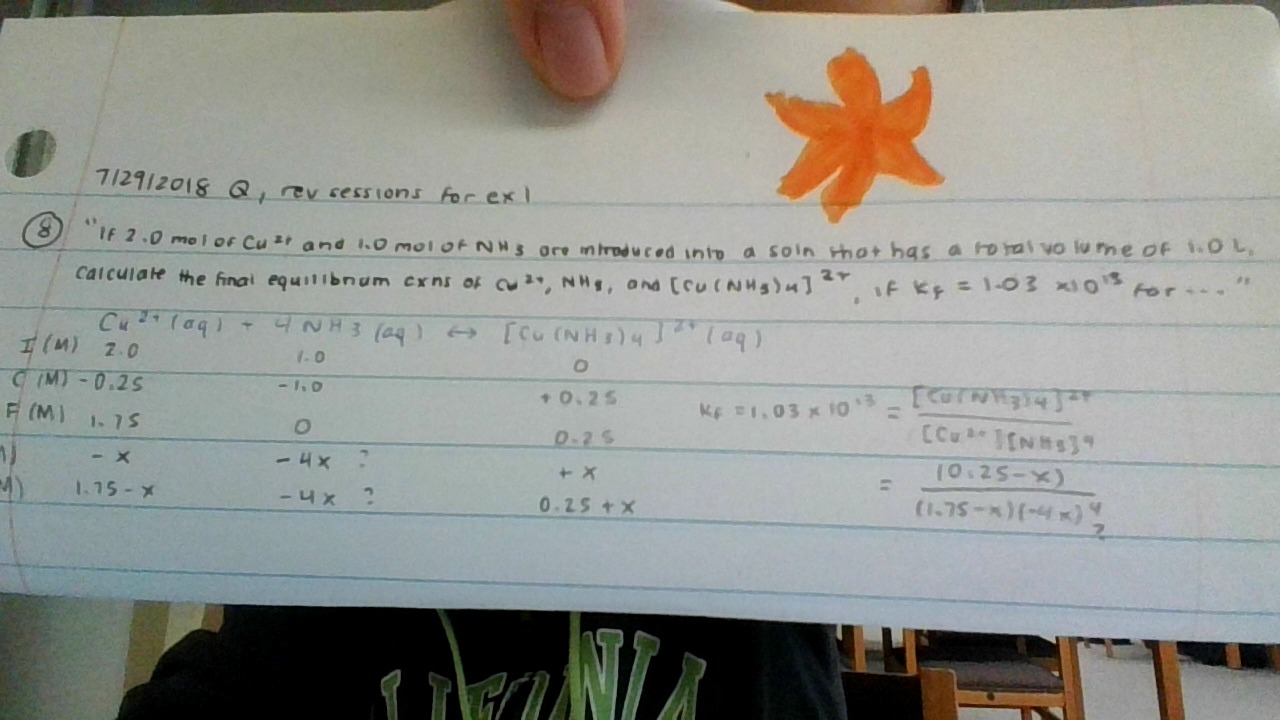Calculate the final equilibrium concentrations (complex ion reaction)?
If \tt{2.0" mol "Cu^(2+)} and \tt{1.0" mol "NH_3} are introduced into a solution that has a total volume of \tt{1.0" L"} , calculate the final equilibrium concentrations of \tt{Cu^(2+),NH_3," and "[Cu(NH_3)_4]^(2+)} if \tt{K_f=1.03xx10^13} ?
If
2 Answers
["Cu"^(2+)]_(eq) = "2.0 M" - 1/4["NH"_3]_i
["NH"_3]_(eq) = 3.43 xx 10^(-4) "M"
["Cu"("NH"_3)_4^(2+)]_(eq) = 1/4["NH"_3]_i
Remember that this is no different than any other equilibrium problem. This might as well be
"Cu"^(2+)(aq) + 4"NH"_3(aq) -> "Cu"("NH"_3)_4^(2+)(aq)
You know what the starting concentrations are (even if you don't, it's in
Remember the coefficients in the change in concentration and in the exponents.
"Cu"^(2+)(aq) + 4"NH"_3(aq) -> "Cu"("NH"_3)_4^(2+)(aq)
"I"" "2.0" "" "" "" "1.0" "" "" "" "0
"C"" "-x" "" "" "-4x" "" "" "+x
"E"" "2.0-x" "" "1.0-4x" "" "x
The mass action expression is therefore:
K_f = (["Cu"("NH"_3)_4^(2+)])/(["Cu"^(2+)]["NH"_3]^4)
= x/((2.0 - x)(1.0 - 4x)^4)
Since
Ammonia is the limiting reactant, because there is less than
We do NOT plug that in for
1.03 xx 10^(13) ~~ (0.25)/((2.0 - 0.25)(1.0 - 4x)^4)
= (1//7)/(1.0 - 4x)^4
From here,
color(blue)(["NH"_3]_(eq)) = 1.0 - 4x = ((1//7)/(1.03 xx 10^(13)))^(1//4)
= color(blue)(3.43 xx 10^(-4) "M")
Now we can "re-solve" for
x = color(blue)(["Cu"("NH"_3)_4^(2+)]_(eq)) = (1.0 - 3.43 xx 10^(-4) "M")/4
= 0.24_(9914cdots) "M"
~~ color(blue)("0.25 M")
And lastly, copper, which we already have from already knowing what value of
color(blue)(["Cu"^(2+)]_(eq)) = 2.0 - 0.25 = color(blue)("1.75 M")
And now let's verify that
K_f = x/((2.0 - x)(1.0 - 4x)^4)
= (0.25)/((2.0 - 0.25)(3.43 xx 10^(-4))^4)
= 1.03_21 xx 10^(13) color(blue)(sqrt"")
screenshot off Word
\sf{1.03xx10^-13\cong((1.75)(4x)^4)/0.25}
\sf{(4x)^4=((0.25)(1.03xx10^-13))/1.75}
\sf{4x=\root[4]{((0.25)(1.03xx10^-13))/1.75}" or "(((0.25)(1.03xx10^-13))/1.75)^(1//4)}
\sf{" \approx0.000348}
\sf{x=0.000348/4=0.0000950}
(please ignore anything under the red text)
\tt{\color{red}{"Old work that is miswritten."}}
My attempt to apply an ICF (ICE with all known values) table.
Since we usually follow an ICF with a normal (variable) ICE table, in our class lectures/notes, I attempted to do so:
 webcam
webcam
 webcam
webcam
Obviously, I messed up somewhere, or I'm not supposed to do this.


